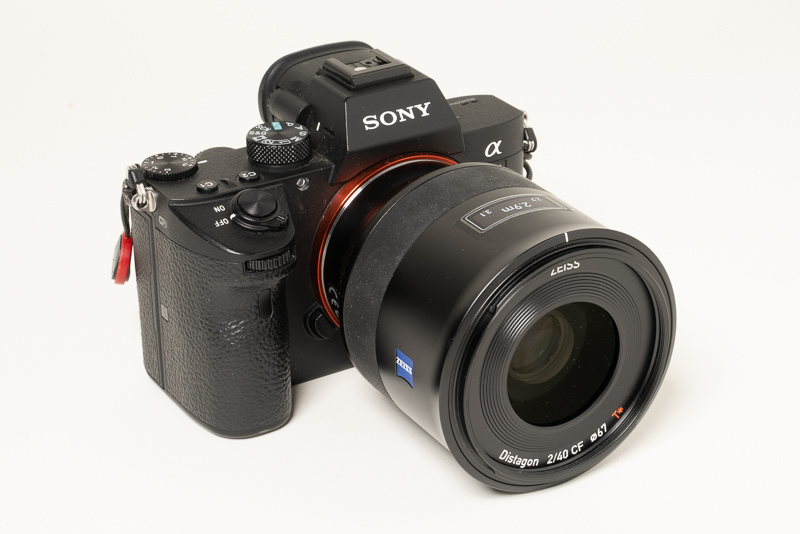
The Zeiss Batis 2/40 CF is a lens of a very popular focal length / aperture class that was missing in the FE lineup from the beginning. When we released our review 6 months ago there were some serious issues and Zeiss released a firmware update some time later. Read our review to check if that could solve all the issues.
Sample Images




Sony A7III | Zeiss Batis 2/40 CF | f/8 | full size

Specifications
The Zeiss Batis 2/40 CF has the following specifications
-
- Diameter: 78-91 mm
- Field of view: 56° (diagonally)
- Length: 93 mm
- Weight: 361g
- Filter Diameter: 67 mm
- Number of Aperture Blades: 9 (slightly rounded)
- Elements/Groups: 9/8
- Close Focusing Distance: 0.24 m
- Maximum Magnification: 1:3.3
- Mount: Sony-E
This is a review of my own lens.
Price : $1299/1299€
Build Quality / Handling
The build quality of the Batis 2/40 CF is in line with the other Zeiss Batis lenses. The lens has a metal barrel and a rubberized focus ring which is sticky and prone to catch dust. The shape of the lens is sleek and rather odd. It looks a bit disrupted without the lens hood.
You can call it futuristic if you want to see this in it. It almost looks like the Batis 1.8/85. The lens is quite light (361g) and rather tall for a 2/40 which makes the lens feel rather lightweight. The weather and dust sealed Batis design has proven to be robust in our long term experiences with the other Zeiss Batis lenses.
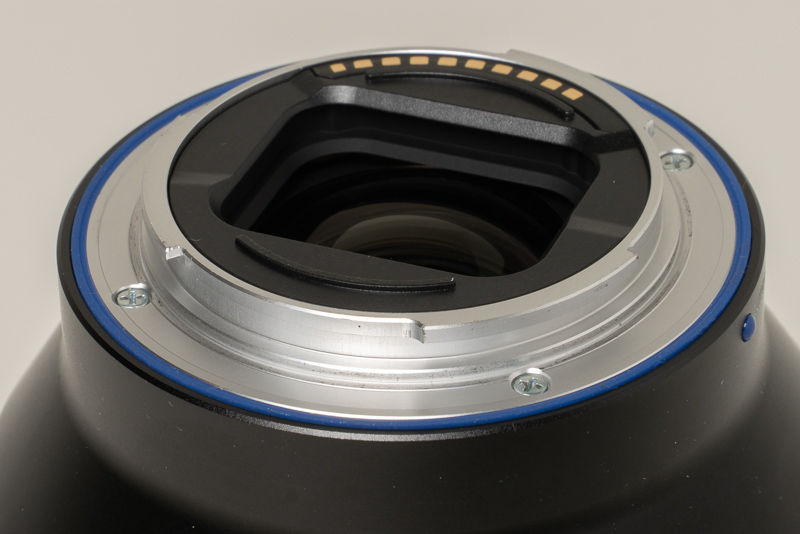
The biggest difference between the Batis 2/40 CF and the other lenses in the Batis lineup is the switch for the three focus modes:
- Full focal range (infinity to minimum focusing distance)
- Infinity to 0.4m (useful for fast AF in all non-macro situations)
- 0.5-0.24m (only for macro work)
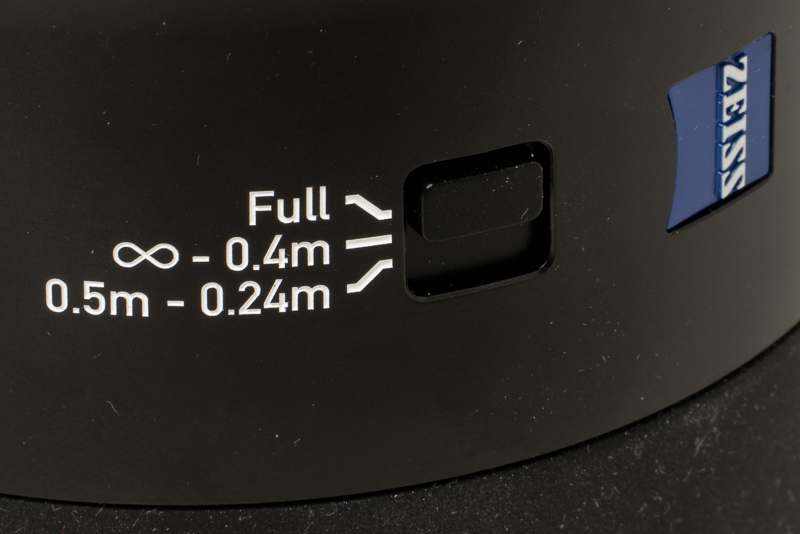
It is obvious that Zeiss tried to keep the Batis lineup as uniform as possible. This has the penalty that Zeiss isn’t able to introduce comfort achievements like the AF/MF switch, aperture ring or lens button. The experience is a bit underwhelming if you use this lens after a GM prime lens.
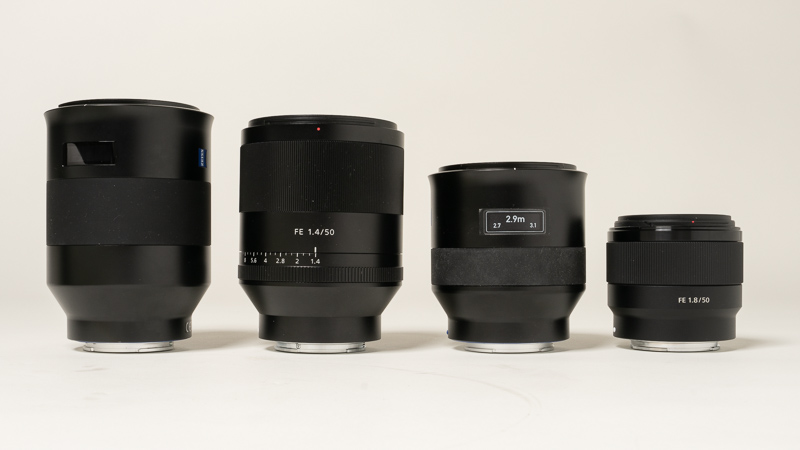
Manual Focus
Manual focusing is the same as with the rest of the Zeiss Batis family which feels okay, at least with the 3rd generation Sony cameras.
This lens doesn’t have a linear transmission/coupling of the focusing ring. This makes manual focusing less direct and enjoyable than the recent Sony lenses.
Of course, this is a focus-by-wire lens. Therefore, the lens has no hard infinity stop. A speciality of the Zeiss Batis lenses is to feature a OLED-Display on top of the lens barrel. It shows a distance scale when the lens is in MF mode.This feature is not perfectly accurate but useful if you have reference points.
Auto Focus
As it was released there were two big complaints with the Zeiss Batis 2/40:
- unreliable Eye AF: I got very inconsistent results at distances below 1.5m when trying to capture my kid. As did many others.
- the Batis stopped down automatically as you focused closer. Beginning below a distance of 66m the Batis began to stop down automatically until f/4 at the close focusing distance of 24 cm. As a user you had no way to stop that. The reason given for that was to “keep the quality” high.
I think this behavior was unacceptable. Period. I really don’t like this way of customer paternalism. Most of the photographers who are willing to spend more than a thousand dollars on a Zeiss lens are probably able to choose between speed, depth of field and image quality. What was causing the most trouble to me is that the 2/40 I had paid a thousand Euros for became a 2.8/40 with unreliable AF at typical portrait distances.
After some time and less than well handled customer complaints Zeiss announced a Firmware issue to address the issue but I decided to return the Batis and not wait for the Firmware update. This is why David Mathar takes over from here to have a closer look at the Batis after the update.
After the Firmware Update – User experience by David Mathar
AF issues with the 40 CF2 – old firmware
When Zeiss acknowledged the AF-issues and announced a firmware update (after quite a while) they framed it as an issue with Eye-AF solely. I found this somewhat hard to believe, so I tested focus accuracy of my Batis sample (before the firmware update) with small/medium flexible spot. The inconsistent AF accuracy was apparent both using Eye-AF and standard AF-C both settings within the suspicious distance (<1.5m). In more detail, the 40mm Batis suffered from front-focusing by approximately 2-3cm at these distances. I assumed that there might be a link between the automatic aperture closing and the AF issue, as both appeared at distances below 1.5m. I also contacted Zeiss in this regard, with little success at this point. As a result, I returned my first Batis.
AF issues with the 40 CF2 – new firmware
In April this year (2019) Zeiss finally issued a firmware update addressing the user complaints about unreliable Eye-AF and automatic aperture closing. This was highly anticipated by me, as I generally love Zeiss glass and specifically like the Batis line for its moderate size and low weight without compromising on image quality. The 40mm focal length in combination with the close focusing ability seemed like a great general purpose walk-around lens. Thus, I did not hesitate and ordered my second 40mm Batis copy. Three days later, a Batis 2/40 with new firmware arrived and I took it out for a spin.
The first apparent difference to the old firmware is the reduced automatic closing of the aperture. Now, the Batis 2/40 closes its aperture from 0.65m successively in smaller steps to a minimum of 2.8. Also, if you already shoot at 2.8, the aperture doesn’t close any further as compared with the old firmware. Although I would have preferred a constant 2.0 aperture, the reduced closing is much appreciated.
But did they also address the focusing issues as they claimed?
Testing AF-C accuracy
To test AF-C I took a book cover with enough details to judge critical sharpness, opened the aperture to F2 and focused with AF-C (+ small/medium flexible spot) from distances where the aperture automatically started closing.
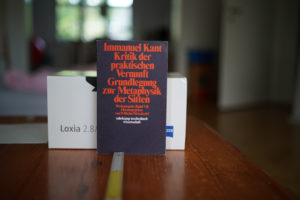
With the new firmware this resulted in distances below ~.65m. Already the first test revealed that the Batis still showed front-focusing behavior in a significant portion of the test shots. During testing it seemed that at distances, where the aperture is about to close by one increment (i.e. ~.65m: 2.0–>2.2 | ~.5m: 2.2–>2.5 | ~.35m: 2.5–>2.8), front-focusing occured reliably. With the aperture closed down a bit in relation to the distance (e.g. 2.2 at ~ .65m instead of 2.0) focusing accuracy seemed just fine again. With the aperture closed to 2.8, AF-C works reliably without any front-focusing. Here is a typical example at F2:
At first sight, without a direct comparison to F2.8 this seems more or less fine. But when zooming in a bit, softness due to front-focusing gets apparent.
A closer look at the folding ruler in the two crops reveals a front-focus under F2.
Testing Eye-AF
With the help of a photo, I repeated the same test for critical Eye-AF:
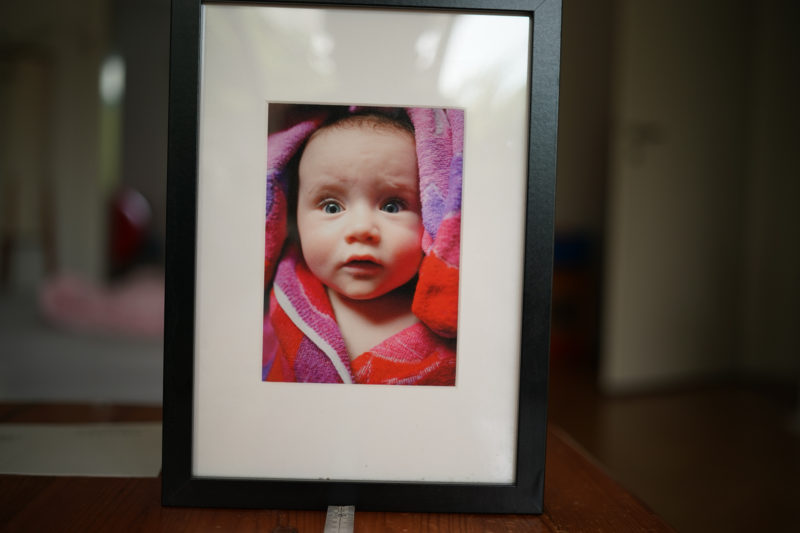
Here are the crops comparing F2 with F2.8. F2 appears soft due to front-focusing:

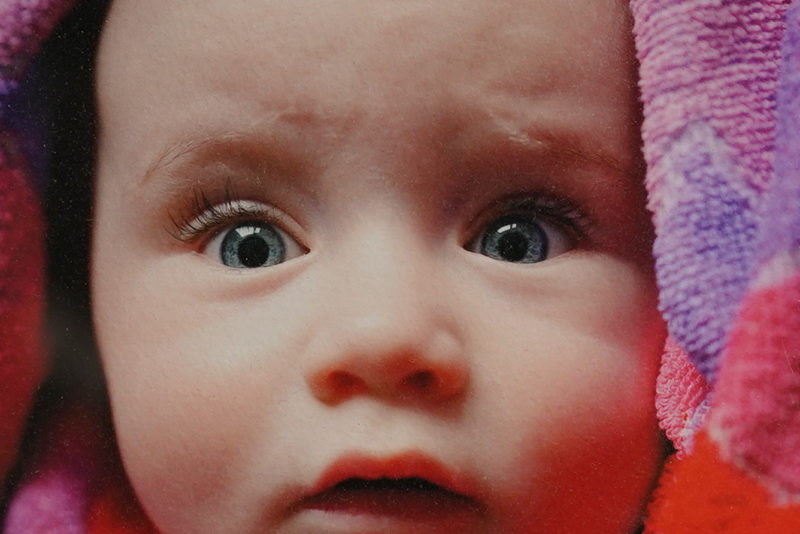
The same behavior occurs in more ‘real-life’ scenarios, such as taking snaps of my son. Unfortunately, the typical portrait distance falls exactly in between these critical distances. Here’s one example shot of front-focusing with Eye-AF:

Again at first sight, sharpness seems fine. But when zooming in, the eyes are soft (although Eye-AF indicated spot on sharpness):

Instead, the focus plane lies on the edge of the plate (a bit in front of the eyes):

After the first AF disappointment with the new firmware, I ordered another (third) copy, but here the front-focus seemed even a bit worse. Meanwhile I had started a quite open minded discussion with a Zeiss employee. He asked for sample images, and was surprised by the apparent focusing issues. As he claimed, they did not observe such a behavior in their lab. Nevertheless, he assured me that they will test this again at some point. Just to be sure, I ordered a last (fourth) copy. However, the results remained the same. I cordially invite Zeiss to loan me a copy without the above outlined issues to prove their claim.
Firmware Update – Conclusion
After the firmware update the Batis 2/40 still stops down automatically but only to f/2.8 and only from a distance of 0.65m. AF is now reliable at distances above 0.65m or with the aperture closed to at least 2.8. AF is still unreliable when the 2/40 is used wide open at closer distances which is a typical setting for tighter portraits. For a lens in this price range, this is simply unacceptable in my opinion. This is really disappointing as, focusing issues aside, I really like the versatility and the output I get from the Batis. As some might say, it has quite some character.
Sharpness
infinity
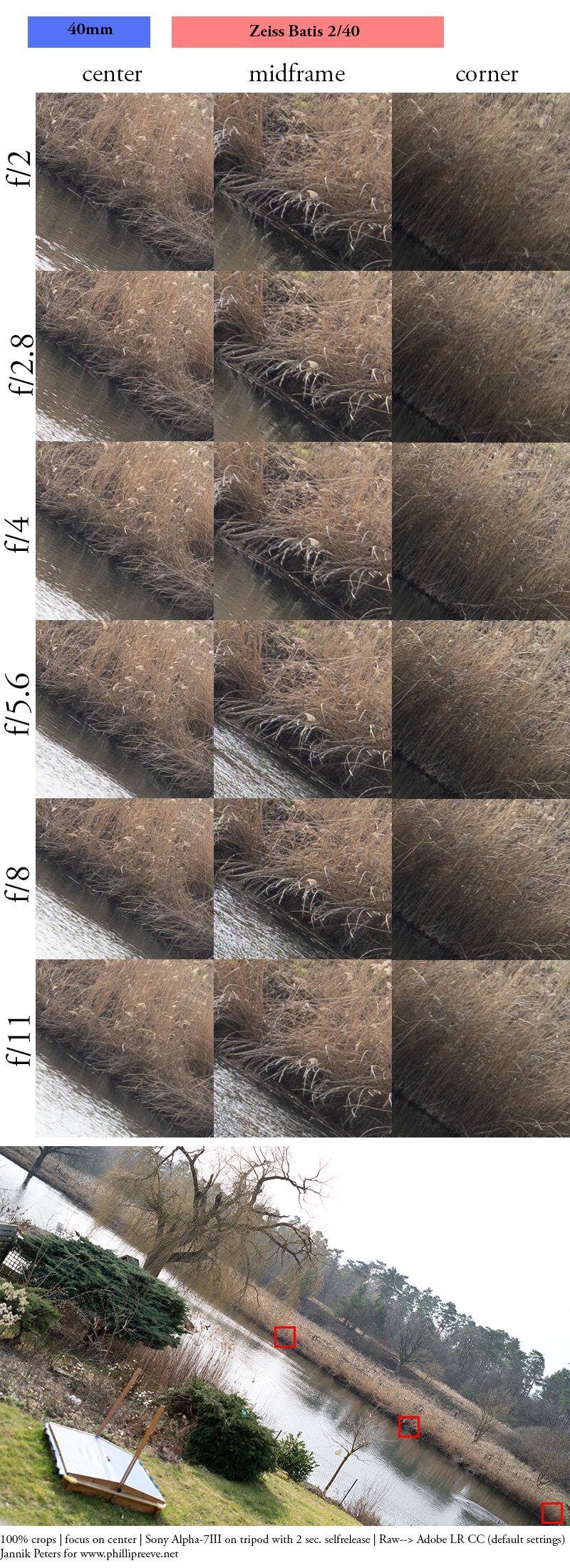
The Batis 2/40 CF shows very good results when it comes to infinity sharpness across the frame.
f/2: Sharpness in the centre and in the midframe are already very good to excellent. Corners also show good sharpness.
f/2.8: Visible boost in contrast, especially in the centre. Corners improve a bit and are now very good.
f/4: Image is excellent across the frame.
f/5.6: Sharpness and contrast peaks.
f/8: first diffraction penalties are visible.
f/11: Diffraction is clearly visible.
Close Up
Won’t be tested with the current firmware!
Flare resistance
The Zeiss Batis 2/40 CF has generally quite good flare performance and is especially very resistant against veiling flare. Nevertheless, Ghostings can be quite pronounced if the light source is really bright.
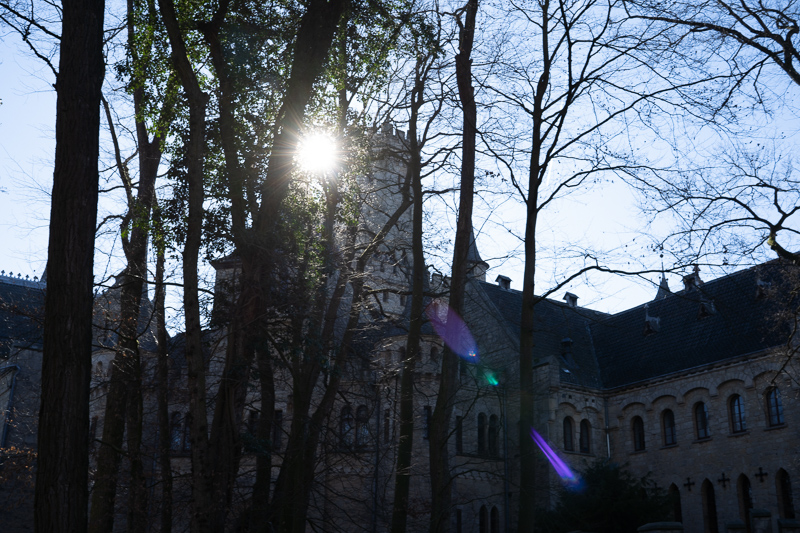
Coma
Stars are rendered well from the center to the edges, very overexposed light sources like the bright star below have a slight halo. One of the best performances of a lens below 50mm that I have seen yet.
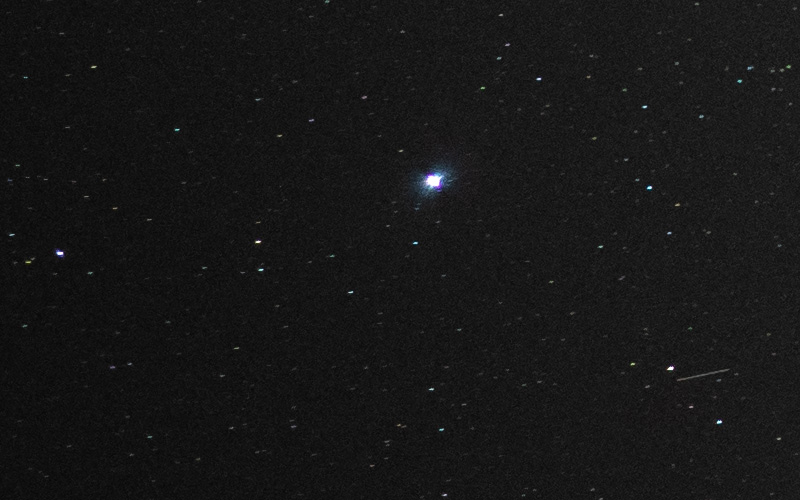
Distortion
Low pincushion distortion, LR value around -1.

Vignetting
The vignetting performance is comparable to many lenses in its class. Looking at native FE options, most small lenses like Voigtländer 1.2/40, Zeiss Loxia 2/35 or Sony FE 2.8/35 show more pronounced vignetting.
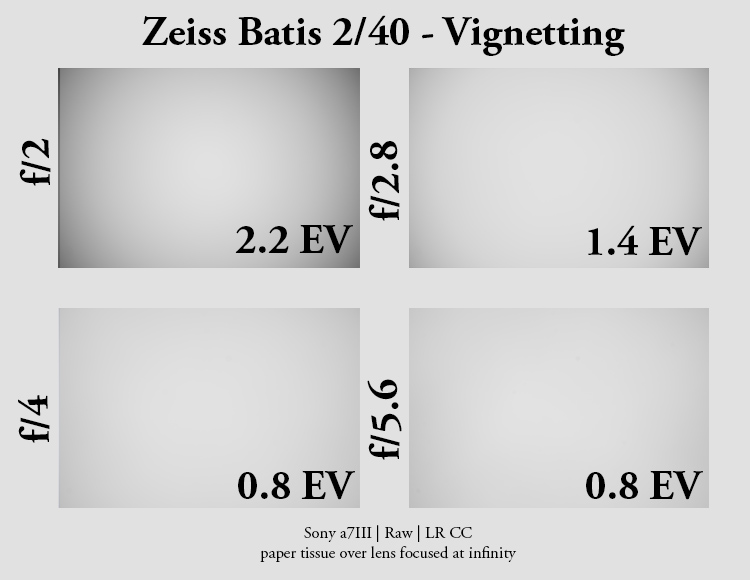
Bokeh
Rather contrasty/structured, onion rings, nonagonal shapes stopped down. Not the best lens for smooth and clean bokeh. Gets smoother the closer you get. Reminds me of Batis 1.8/85 in general.
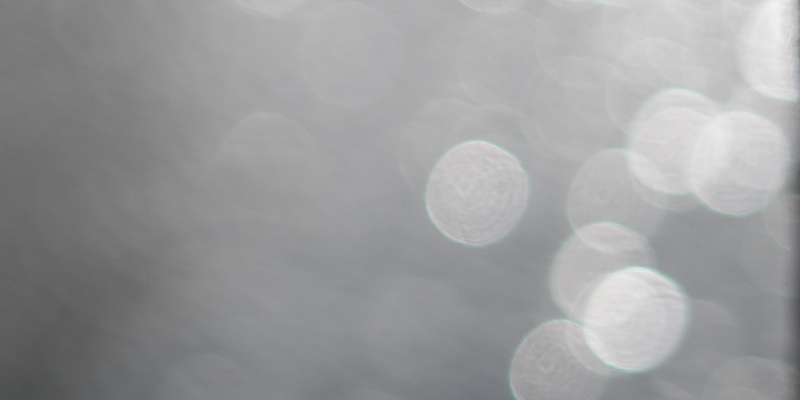

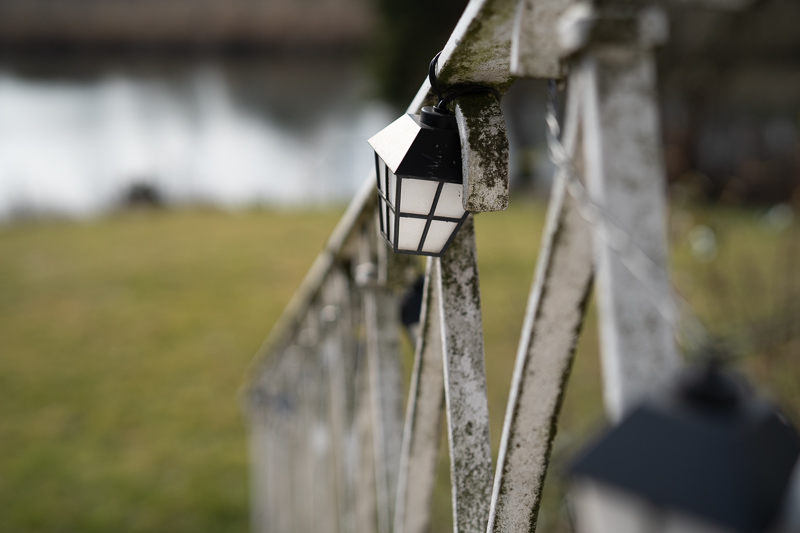
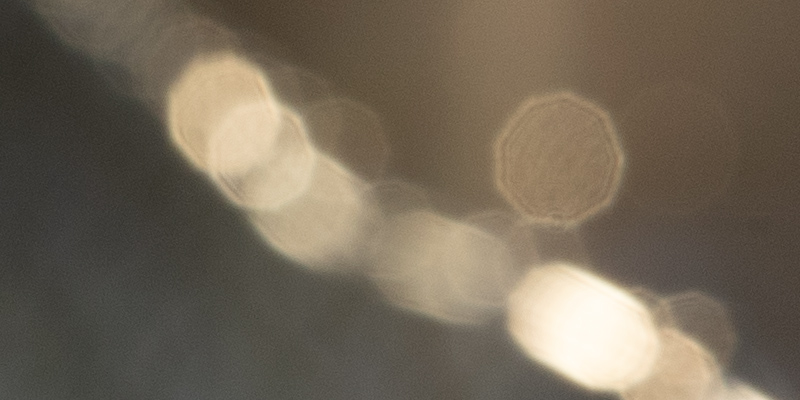
Chromatic Aberrations
Lateral
This lens shows minor lateral chromatic aberrations. Even if the cameras JPEG lens corrections are all turned off, LaCA is very unobtrusive.
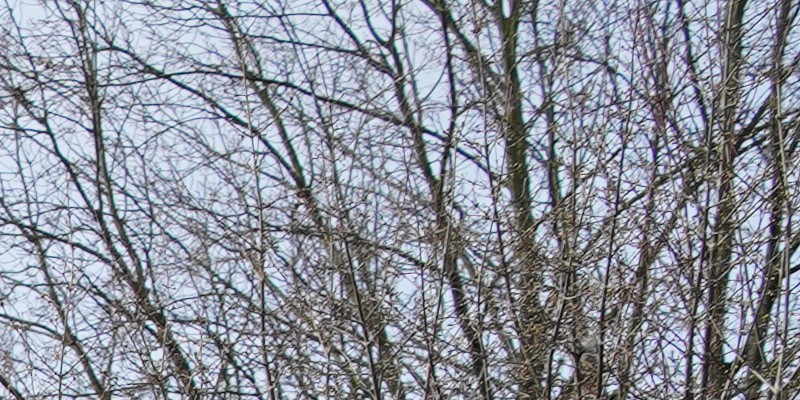
Longitudinal
The lens can exhibit some green/purple longitudinal chromatic aberrations under demanding circumstances. The level of LoCA is mostly low, even when I expected to see much of it. The performance seems to be a fair bit better than most competing fast Sony lenses (1.8/50, 1.8/55 ZA, 1.4/35 ZA, 1.4/50 is also better corrected).
Note that the automatic aperture closing can improve the impression artificially in that test. I’ll redo it after the firmware update.


Sun Stars
As expected, sun stars are not very defined and are hardly ever there. Actually it is the opposite of the extremely pronounced and big Zeiss Loxia sun stars. I did a sun and a street lantern test. Note that the Batis 2/40 is already stopped down at f2 on a target that is 30m away from the camera:
Alternatives
This list could be endless in this lens class, I will try to cover the most relevant:
Voigtländer 1.2/40
Compared to the Batis 2/40 CF, this lens is smaller but much faster. It shows a balanced performance and is a good everyday option if you can live with MF. Optically, it shows worse correction and is also less sharp on the edges of the frame. Vignetting is high and MFD is much worse.
Samyang 1.8/45
At half the weight and a much smaller size and price the Samyang is an attractive alternative to the Batis if you are willing to compromise on build quality, deal with higher variance and magnification. I had no issues with my copy in this regard but other reported inaccurate AF.
Sigma 1.4/40
A behemoth of a lens but with a much smoother rendering and superior sharpness. Check our comparison.
Sigma 2.8/45
A small lens with super smooth rendering and good sharpness but it also has serious AF issues up to several meters.
Sony FE 1.4/50 ZA
The Sony FE 1.4/50 ZA has a true focal length of 47mm, quite close to the Batis 2/40 CF. I own the lens for quite a long time. It is razor sharp in the central region even at f1.4 and renders beautifully with nice bokeh and contrast. It is my preferred choice for all people related photography if weight is not an issue. However, its 778g let reach for something lighter.
Sony FE 1.8/50
This is where this little lens comes into play. It is super light and very small. Its AF is fast and reliable on the A7III, something I can’t say about the Batis 2/40 CF yet. Optically, it isn’t as sharp (wide open) and well corrected, is more prone to flare, has worse MFD but better bokeh. Regarding its price, it’s hard not to recommend it.
Sony FE 1.8/55
This lens is brighter and smaller but the focal length is quite different and it also lacks the close focusing capabilities. It is very sharp wide open and stopped down. AF is very fast and reliable . Bokeh is not great either and LoCA can be a problem.
Sony FE 2.8/35
This lens is tiny and also very sharp if you find a good copy. Much worse MFD and high vignetting. Funny enough that this lens and the Batis 2/40 share the same aperture for portraits at the moment.
Sony FE 1.4/35
Like the 1.4/50 ZA, this lens is very large and heavy. It is optically quite capable but can’t reach the same optical quality in comparison. Very nice transition zone but onion ring plagued bokeh. Not the best landscape lens due to a visible midzone dip. Furthermore it has horrible sample variation. I tried it many times but didn’t get a well centered sample.
Zeiss Loxia 2/35
This is the in-house competitor of the Batis 2/40 CF. The lenses are very different from each other. The Batis is optically more capable and features AF. The Loxia has great MF, is much smaller and has good sun stars.
Canon RF 1.8/35 IS
This is obviously not an alternative for everybody who already owns an E-Mount camera. Nevertheless, I need to mention this lens here. It is faster, has optical image stabilization, even better MFD (still sharp without automatic aperture closing!) and is smaller, lighter and much cheaper. To me, this lens looks like the real deal in this lens class and lets the Batis look quite odd in comparison.
Conclusion
good
|
average
|
not good
|
The Zeiss Batis 2/40 CF is an optically very capable but quite expensive lens with issues a lens at this price shouldn’t have.
It is able to render with high sharpness, contrast and decent flare resistance. It shows low distortion and coma.The Batis is also quite light, well built, weather sealed and focuses very close which makes it a possible choice as an everyday lens. The bokeh is not really disturbing but has high contrast, outlining and onion rings.
The bad manual focus experience (non-linear) and the undefined sun stars (for those who like defined sun stars, myself included) are the major shortcomings for landscape photography.
After the firmware update issues are not as annoying as before but they are still an annoyance you wouldn’t expect in a lens of this price class. If you shoot tight portraits AF can be unreliable and a closed aperture is forced upon you at short distances. There are of course still many applications where the behavior isn’t an issue and the other qualities weight a lot more but you should keep the flaw in mind when making a purchase decision.
More Sample Images


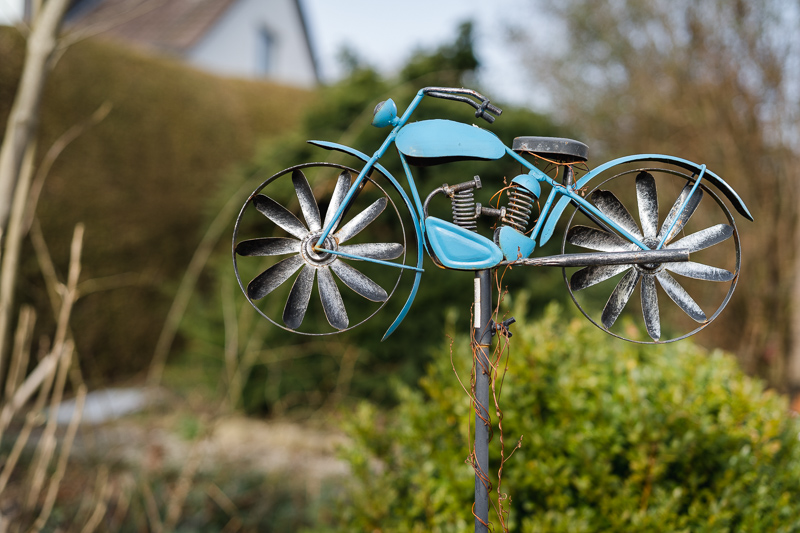
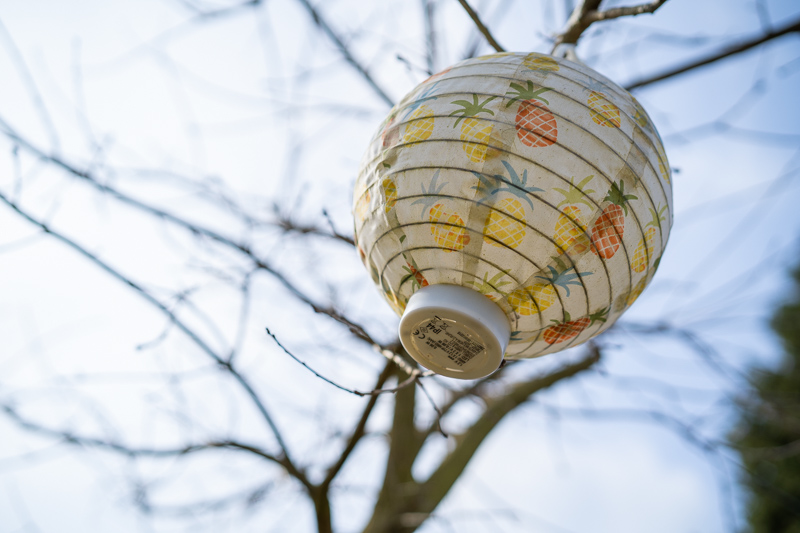




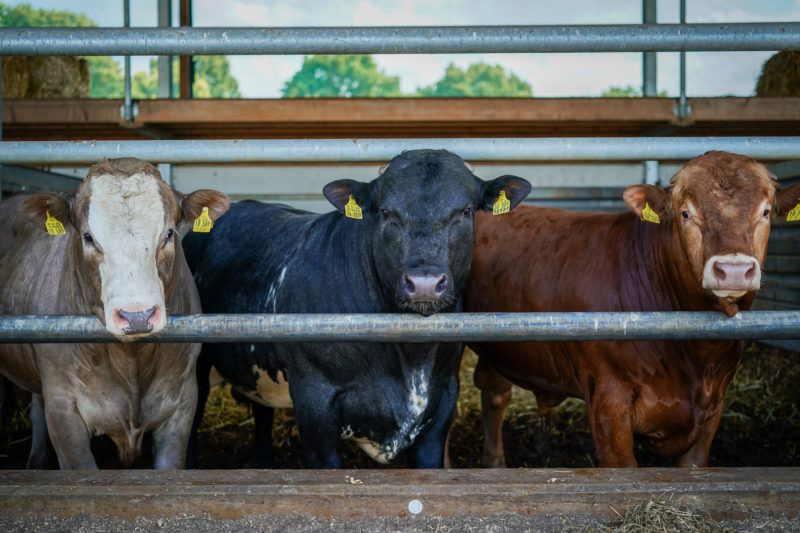


Further Reading
This site contains affiliate links. If you make a purchase using any of the links marked as affiliate links, I may receive a small commission at no additional cost to you. This helps support the creation of future content.
Jannik Peters
Latest posts by Jannik Peters (see all)
- A beginner’s guide to bird photography – Episode 1: Sharpening your senses - August 3, 2021
- Review: Tamron 35mm F/2.8 Di III OSD M1:2 - March 8, 2020
- Review: Zeiss Batis 2/40 CF after the Firmware Update - August 16, 2019
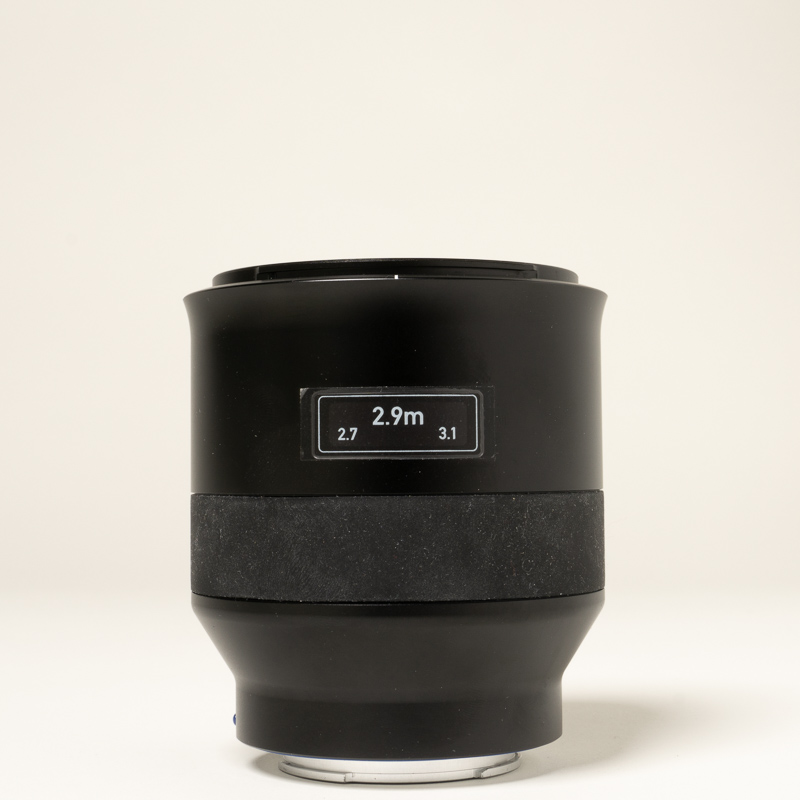
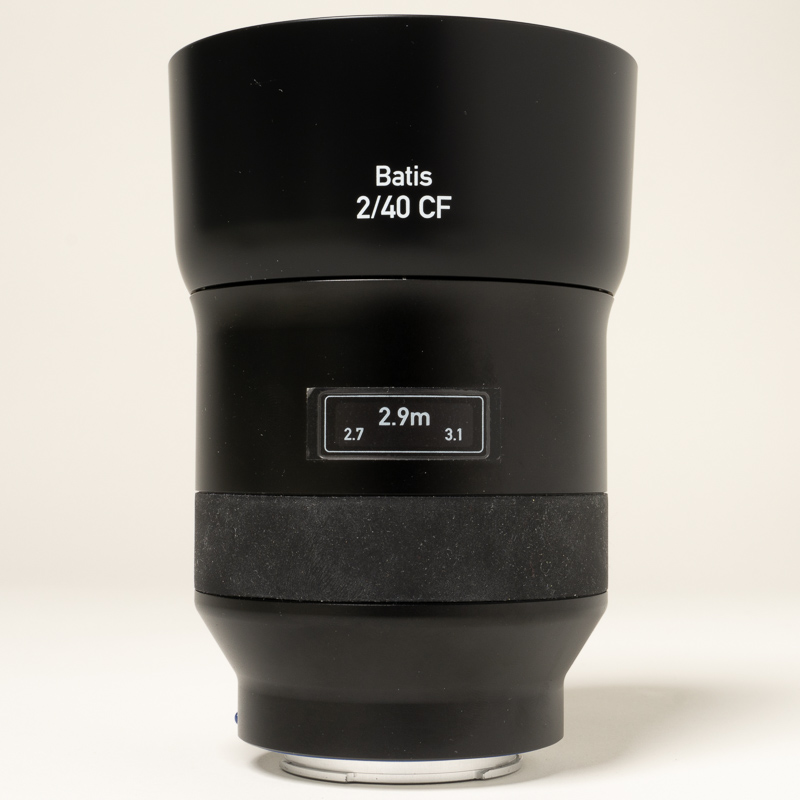



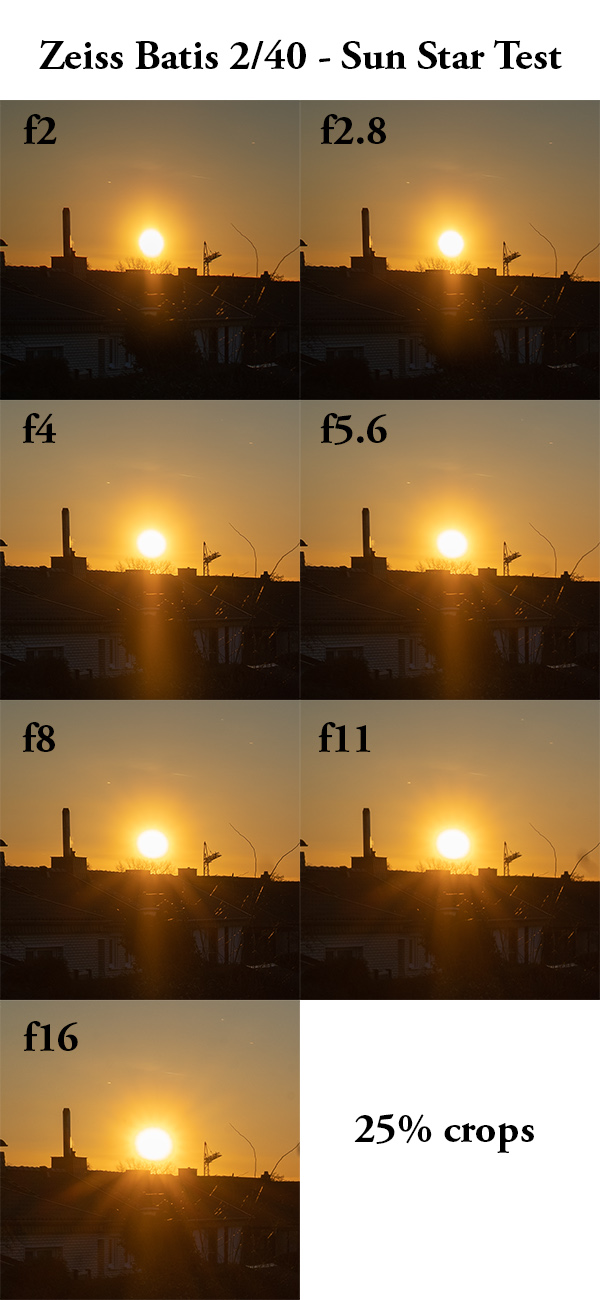
Hi Jannik,
You write that the aperture varies between 66-1,5m. Is that really 66 meters? So I can shoot a photo at 30 meters and risk getting a f2.2 shot?
My current wedding photography lineup is 24GM, Sony Zeiss 35 and 50 1.4 and Sony 85 1.8. Think I’ll be disappointed with a 24GM + 40 Batis + Sony 85 instead?
Best
Anton
Yes, according to the display on the lens.
It depends on your needs. The 1.4/50 offers better bokeh rendering in first, also more shallow depth of field. I could see myself replacing my 1.4/50 with the B40 after the update.
Thank you for the review (and all the other ones)! So the lens will still automatically stop down, even after the firmware update. That’s simpy unbelievable. I’ve never heard of anything like this and wouldn’t have thought that a manufacturer would do this. It’s a huge disappointment.
I couldn’t agree more.
I also own a copy of the 40mm Batis. My impression regarding the eye-af issue is that it’s not an issue with eye-af reliability but with af-c consistency in certain distances to the object. Just try af-c on e.g. a flower or a leave in distances like 1m-0.6m. There my lens shows the same inconstistent behavior (looks like a slight front-fokus, similar to the eye-af trouble) as in similar eye-af scenarios.
Thanks for the test, Jannik! Had high expectations for this due to it filling up the vacancy of a 35mm-ish F1.8-2 lens and even offering macro. But quite sad to find its large size, macro aperture problem and bokeh issues. Still waiting for a comfortable 35mm option with AF…
Presumably the problem with the lens „stopping down automatically“ is not a problem if you photograph in „M“ (manual) mode?
Of course the problem also exists in M mode. It still says f2 in the camera, the lens does something different.
Wow! I can’t believe Zeiss put their name on a lens with such issues. Thanks for confirming this.
“The lens is stopping down automatically as you focus closer. ”
I suppose, physically nothing changes here (aperture diameter is not changing). Most likely the lens change the focal length in closer focus. It is quite common phenomenon. But in most cases lens doesn’t “report” the real changed F-number to the camera. It seems this Zeiss lens report it, like most Nikon lenses.
No, that is incorrect. Zeiss decided to stop the lens down more than needed to “improve” the performance.
Jannik and Bastian
Though I also regret to avoid the Batis 40 due to the lens stopping down automatically, the 50/1.4 Sony/Zeiss Planar behaves similarly. Albeit, it stops down less, it does stop down almost a 1/3 to 1/5 stop at min focus distance. See this FM forum article:
https://www.fredmiranda.com/forum/topic/1573651/0
I’m sorry, I meant the 50/1.4 closes down 1 whole stop at MFD. this is my basic testing via the link.
Yes, I was aware.
But imho situation is not as bad with the 1.4/50:
as it uses the higher grade 11 blade aperture diaphragm from the
GM series bokeh highlights at least stay round.
Needless to say I am absolutely not a fan of this automatically stopping down.
It’s the most ridiculous excuse ever. Even 30 years old manual lenses improve sharpness in close focus when it stopped down, but they didn’t force to do it at least. I can’t believe they said that so proudly like they did something amazing.
I agree! It appears that Zeiss has lost its way. I have insisted on how both Loxia & Batis line-ups are, and always with strong backlash.
This is not to say that Batis & Loxia lenses are worthless or that they simply offer poor optical performance. They are competitive and competent lenses, relative to their immediate competition, there’s no question about it.
Nevertheless, the priorities Zeiss has set, appear to be the wrong ones, and the unnecessarily small form factor and fuzzy experience offered by the Loxias, and the AF, OLED gimmick, form factor and optical design choices set by Zeiss priorities of the Batis line, are in my opinion a hindernis for the ultimate optical results and experience.
The 90 degree focus throw of the 21 & 25mm – which are otherwise optically good lenses, makes the experience and use of this lenses a real pain. The 85mm has a great focus throw and is a lot more pleasant to use. The narrow and too close to one another focus & aperture rings, do not allow intuitive and fast manual operation. Form factor is surely an aspect of design, but manual usage, and optical quality cannot possibly be secondary priorities to size, weight and form.
The Batis line, which offers lesser optical quality than the Loxias, is in my opinion a tru faux pas, as it appears to want to emulate other manufacturers instead of providing the elements that has set Zeiss aside from the competition, and the uncompromisig elements that Zeiss is known for.
While the 135mm Apo Sonnar is a great lens, I’d much rather buy the discontinued Classic f/2.0 model, with a real aperture and focus ring. The rubber rings of the Batis & Milvus has never convinced me.
While the Loxias are good lenses, I believe they could be better if the form factor – size, weight, filter thread diameter – wasn’t a priority. It doesn’t feel like the high Zeiss price tag for the Loxia & Batis lenses is justified, and both design priorities, materials and user experience appear to be inferior to preceding DSLR and range finder Zeiss lenses, and thus a significant step back to overall quality.
The Zeiss lenses for E-mount feel like second class Zeiss lenses, and that is quite disappointing, for me at least. I’d rather adapt Classic, ZM and C/Y lenses, that provide a more enjoyable experience, and more just value for money relation.
The Zeiss camera recently released, which I’m sure will take decent pictures, is based on a dubious social media “work flow” coupled with a contradictory – frankly ridiculous – incorporation of professional editing capabilities, is basically a premium point & shoot toy. An oversized phone with a premium lens attached.
If the great EVF and display were on a camara optimized for optical quality and versatile photographic use, I’m sure it would be interesting. A Zeiss camera, would in my opinion, firstly be focused on providing access to all of Zeiss’ lenses, that’s where Zeiss’ ultimate treasure and advantage resides.
Zeiss needs to get its shit together!
I would like to disagree with a few of your points. While I’m not a fan of the Batis line, I love all the Loxias and I think the decision to keep the lenses small was a great decision. Sure, the ergonomics aren’t ideal, but it’s something you get used to pretty quick and the small size and wonderful IQ make it the perfect line of lenses. I’d much rather have that instead of monstrously large and ugly lenses just for that additional 1% greater IQ.
I agree that the decision to keep the lenses small is a sound one, and I also consider the Loxia IQ excellent. But why not better designed ergonomics, like the ZM lenses, which feel better made and offer a much better experience? Why not a decent focus throw – and ergonomics – like some even smaller C/Y lenses? ZM & C/Y lenses were never about having the same filter thread diameter or streamlining; each lens had the size and characteristics it required, but I believe Zeiss prioritized the wrong way with Both Loxia & Batis design.
Then there’s the flimsy lenshoods, that although made in metal, attach poorly, clatter and feel like they’re going to fall off. This, added to the inability to attach Loxia lenses without making a fuzz, focussing a wide angle lens properly near infinity with a 90 degree throw, and operating the lens rapidly with a barrel that barely has non-moving surfaces, feels cheap, precipitated, and lacking in proper design considerations.
Bottom line, I don’t believe it’s fair to pay premium prices for products I have to get used to operating, due to poor and flawed design.
I’m sure Zeiss could have delivered a better line of manual focus lenses, that deliver a premium experience for premium price, for which their relative optical quality is no excuse.
If some photographers absolutely need compact lenses, that is OK, but there’s no need to cut corners at consumers expense. And this should certainly not mean that those who don’t mind a little heavier and more robust weather sealed options, should have to be out of options.
I would have wished for compact manual leises in ZM design quality – and style – since prices aren’t that different.
Zeiss is an excellent manufacturer, and that should be well acknowledged, but it’s lost it’s way with the design priorities for the E-mount, there’s no doubt about it.
Cheers!
What a disappointment. Thank you, Jannik, for identifying these problems.
I have been a big fan of Zeiss (my favourite lens is the 135mm f/2.8 Batis), but this one, the 40mm f/2 Batis, is likely to be a dud.
Badly done, Zeiss. Badly done.
Thx for this review. In sum, i am a little disappointed about the optical results of the Batis Lens.
Regards Bernhard
This is the first time I’ve heard the fe 50 1.8 described as fast focusing. Perhaps only true on the a7iii.
Personally I’m keen on the cv 40/1.2 – so many great pictures from that lens.
Thanks for the review – after going back and forth, I decided to order one to see how I like it. I’m looking to see if it can be an AF replacement for a Loxia 35 and Loxia 50mm in my camera bag.
Part of my decision is based on the fact that I don’t see a better native lens option at 35mm with AF right now. I didn’t like the Sony Zeiss 35mm f2.8 when I had it – I thought it was a good landscape lens but wide open for people, it felt flat in a way that the Loxia 35mm isn’t despite it being soft wide open.
If it doesn’t work out, I’ll probably go back to the Loxia 35mm and keep on manual focusing.
Maybe try the Voigtlander VM 35mm 1.7 + 5 PCX filter.
Imho still way better than any native 35mm lens.
I tend to agree on the Voigtlander but I decided to move away from adapted lenses a couple of years ago and I decided AF is a must for me at this focal length. If I didn’t need AF, I’d probably be using the Loxia 35mm still even with its drawbacks.
Also after seeing the spec sheet for the Leica SL APO-Summicron 35mm f2 at 73mm Diameter and 102mm long with a 67mm filter thread, it makes the Batis 40’s size seem a little more reasonable although it’s still quite fat. I guess all that AF electronics and corrective optics just take up a lot of space. The $4695 MSRP also makes the Batis seem like a bargain at $1300!
Hi Bastian,
Can we get a direct link to get the 5 PCX filter for the ultron?
I’ve been trying to look for this.
Thanks,
What is “the direct link” greatly depends on where you live.
But try this one.
Thanks for the review.
The link to the Tamron review goes to Google.
Also, reviews of the Batis 25 and 40 are missing from here:
https://phillipreeve.net/blog/sony-fe-lenses/
What don’t you like about the 55/1.8 bokeh?
Das Canon EF 40mm f2,8 STM ist auch noch mit Sigma MC – 11 Adapter eine kleine und leichte Einheit. Der AF funktioniert super gut und die Schärfe ist hervorragend.
Und das alles zu einem lächerlichen Preis gegenüber dem Batis.
Schade, dass dieses Objektiv in der Betrachtung fehlt.
Hi, das Canon ist mit Sicherheit ein gutes Objektiv, das zudem sehr günstig ist. Nichtsdestotrotz ist das Samyang 2.8/35 leichter, kleiner, günstiger und fokussiert wohl mindestens genauso schnell. Für mich wäre das keine offensichtliche Alternative, solange man nicht entweder das Objektiv oder den Adapter bereits hat. Im Vergleich zum Batis fehlt mir zudem eine Blende, um es in die gleiche Kategorie einzuordnen.
New firmware update coming?
what did change?
– Optimization of the aperture characteristics (further information)
– Improvement in focal precision when using the eye-AF function on the camera
The firmware for Batis 40 f/2 CF has been released. Could you please help to return some points in the review to see if there is any actual improvement? How better Eye-AF is?
I have researched on some alternatives, such as Voigtlander 40 1.2 E-mount, but also from this website review, it seems that CA of Voigt lens is very bad at f/1.2 ~ f/1.7, therefore it’s not really worth to sacrifice AF for the lens.
And could you give some comments on why Batis 40 F/2 is still pretty big in size? The focal length and aperture are almost perfect for walk-a-round lens, but not yet its size.
Thank you.
We will address them in an update. The short version is that the automatic stop down issue is reduced to where it isn’t a real concern and AF much improved but it appears to still have some issues.
Oh snap. Just ordered a copy because of several rapports of the af-issues now being fixed. What issues are you referring to? I might have to cancel my order.
Most people seem to be happy now. Others report that at distances of about 1m they experienced a rate of more than 50% of misfocused images. Not by much but still noticeably softer. From a distance I don’t know if those who are unhappy are just more critical oder have a bad copy but since the majority seems to be happy I would probably risk it in your place.
Great review! Just wonder can you guy update the test result with the latest firmware update?
We will update it 🙂
hi,
I am also interested in an updated review as it looks like the front focusing issues are not solved or at least not completely resolved.
thanks a lot.
I bought the batis (it was updated, software ver 2.0).
But i have issue with eye af.
Somentimes it work, sometimes suffer front focus. In particoular with children but not only.
It’s a great lens, but discontinue result…
one day, 7 of 10 shot, wrong… other day 4 of 10.
I use with a7rII, but never had issue with sony 85 1.8, sigma 50 1.4 art (also at 1.4 works fast and great). sony 35 2.8, samyang (slow but precise)…..
I think Zeiss has not made good work…. One time they test lenses before put them in the market…
Probably now no. And is not correct to leave to users test product when their price is 1300!!
I don’t know if i’ll send back. I like the focal, color and contrast… but i shot 80% with eye af….
I’m having the same problem as I rented one for testing before deciding whether to buy it or not.
I really wanted to have a lens beyond 35mm but not as close as 55mm for stills especially for food, with CF ability, which leaves me the Batis 40 CF the only option really. In that regard, it works great at f2.8 (as I’m already aware of the aperture closing problem from this great review).
Then I tested the portrait abilities, and I’m having the same problem as you described above, and soon I find out if I just stop down to f2.8 for portraits the AF works fine again, no missing focus or soft image at all.
My conclusion is that I’ll probably just buy it and keep in mind what I’m purchasing is Batis 2,8/40 instead of a f2.0, a trade I’m willing to pay (for the better color rendition)
Hi, what do you think about Sigma 40mm art?
Hi there, any update on as how the AF issues are after the FW update? Stopping down at CF seems to be fixed, but on the AF there are diverging stories (maybe as well depending on the Body used, e.g. A7rII vs. A7III). Or did you give up on the Batis? Would not be too surprised, there is a lot of red text in the “cons” box above, a little too much for a 1400 EUR/CHF lens…
Was about to merge my 35 1.4 and 55 1.8 ZAs into one lens (the Batis 40), as I really like the 40mm focal length and the CF feature, but the AF issues and the bokeh rendering do worry me a bit…
I’ve tryed two copy (before and after sending my camera on assistance to check autofocus).
On a7rII suffer of front focus on eye af and af-c, particoular on people.
People has a7III and a7rIII don’t say suffer.
But my camera with 85 1.8…70-200 f4… sigma 50 1.4 art … and 35 2.8 has never suffered that.
So i don’t know.
The focal is good to replace both 35 and 50, and i like rendition and color..
If ordering this lens, does one request a specific production date or after to assure the lens has been updated? I purchased it early on and returned because of the auto stop down issue. If I buy an f2.0 I want to use all of it. Also will wait to see review of Sigma 45/1.8 which will have same minimum focusing distance, though I think 40mm makes more sense than 45mm as a walk-about lens.
There does not appear to be a difference between different batches.
Have had my 40 CF 8 months. It is my most used lens, used much more than my Loxia 35. This is due to its close focus.
When used on my a6500 it becomes a 60mm equivalent with 1:2 reproduction, ideal for wild flowers encountered when hiking.
Given my option of this rig vs. my Micro Nikkor 55mm on my a7iii, I’ve gravitated to the Batis on the cropped sensor. Why? Many flowers are located so close to the ground that I cannot use the EVF nor see the LCD well enough to manually focus. But AF with tilt screen gives me excellent focus. Plus in low light with the small apertures needed for macro only autofocus with the built in focus assist light works.
Slipped and fell to the ground landing on my back with the unprotected Batis mounted on the a7iii which got caught beneath me. Only damage was scrapes on the plastic hood. Lens remains perfectly centered. Don’t do this.
Why didn’t you suggest the ZM35mm 1.4 as an alternative? Its one of Zeiss’s greatest lenses and as far as I’m concerned works very well on the Sony A7.
I have anticipated the answer… By the way have you tested resolution at macro distance, now that after fw update the aperture can reach F2.8? Would like to know how bad teh spherical aberration must be to let Zeiss decide to stop down the aperture….
From my experience, resolution at mfd is superb, even at 2.8. Spherical aberration is non existent I would say.
Makes one wonder even more why they force the closed aperture on the user.
gotta cheat to look good in online tests!
40mm F/2.8 lens for €1,299……
Thank you for the update to the review! The current price of over €1000 is quite steep for an f2 normal without anything really special, let alone one that becomes f2.8 when focused close. The observations presented here make me want to wait for more experiences of Sony’s new 35/1.8.
Thanks for the Update on AF-C / Eye AF – exactly my findings. I tried two copies of this Lens with FW 2.0, both show the exact same Front-focus issue wide open at distances around 0.65 meters.
I told the customer service from Zeiss twice and sent sample images of my test Settings equal to yours – Never got a seroius reaction from Zeiss. In Oberkochern they seem to believe the issue is fixed with Firmware 2.0…
Or (and even worse) they are not able to fix it properly yet!
Sent an email to Zeiss specifically linking your review. Perhaps showing that this knowledge is out in the open will help, but considering their reluctance to do anything so far I doubt it. This is honestly disappointing as the results from this lens and the focal length are the best I think anyone can hope for and I was really looking to pick up a copy.
On a side note, I didn’t mind the concept of a closed aperture at mfd too much–if you care to look, Chris Turner has a review of the new 35mm f1.8 FE from Sony that has some downloadable .arw files. At mfd, the 35mm is noticeably soft wide open despite better performance in the mid to far range, which is why I think Zeiss opted to include the feature (if you’re going to want to stop down an exceeding majority of the time anyway why not just have the lens do it automatically?). However, the sacrifices to practical operation of the lens are too much.
As someone who’s done a bit of programming, I wonder if by telling the camera that the lens is wide open it attempts to use focus protocols for f2 that falsely pass front focusing as correct when the aperture is f2.2-2.8 because of increased depth of field or other characteristics of the lens when stopped down. This theory would seem to be supported by proper operation at f2.8, but I wonder if you could test it further by measuring the focusing distance and set your aperture to what the lens should actually be at. If so, maybe this information could be sent to Zeiss and something could be done?
Some people like to take 2 shots in close up scenarios: first for the soft background (maximum aperture), second one for better details (slightly stopped down) and blend these in post.
This is something I did e.g. here with the Voigtlander 50mm 1.2.
I can definitely see a use case for that, and considering the AF-C behavior I would definitely prefer full manual control at this point–I just mean to say I can see why Zeiss did it, and if it were working well I’d say it would be an enjoyable compromise for most circumstances.
I tried the 40mm Batis today on the Sony A7R IV. As expected no difference with respect to stopping down at close focusing distances, but Eye AF seems more reliable/accurate. The other strange thing was that close focusing seems slower than on the A7R III (latest firmware). I had both cameras so I could compare them side by side.
Also tried on the A7III after making a decision to buy after seeing one on sale. In general, I would say AF is very fast, not always the most accurate (esp compared to the 55, the only other native FE lens I have–although to be fair, Jim Kasson’s testing shows that to be one of the absolute most accurate lenses on the system) but I certainly didn’t have issues like those described in the test.
AF-C or AF-S can miss occasionally, but like, 1-2 of 10 shots in good lighting, and less on completely static subjects. There are two spots of trouble I’m seeing though. The first is with objects near the mfd with motion perpendicular to the focal plane. To be completely fair, this is a problem with all high magnification lenses and I haven’t found a single one that completely gets rid of it. (Maybe one day Sony will release a crazy macro GM with THREE direct drive focusing groups or something, but until then I wouldn’t hold my breath on this problem going away.) When you have an object that both makes up ~30% or more of the total image area and is also less than a mm thick in terms of DOF it’s easy to lose. The only issue I think completely endemic to this combination is that in low light, starving the AF of even more light brings on conditions of hunting faster… and while that is a bit disappointing I think this AF issue is a bit overblown. I don’t think the reviewer is lying or fabricating results, but even six copies of a lens and a single body isn’t a great sample size.
I will say surprisingly I find the closing aperture a bit of a benefit for portraits. Just that little bit of improvement from stopping down bringing that little extra bit of IQ outweighs losing a bit of DOF. If you really want to shoot super shallow with great IQ I’d recommend the Sigma lenses, but those come in at over a kilo.
Hong Kong sales price HKD$6880
This is a C/P lens?
I tried the Batis today and can confirm that with a Sony A7III it front focuses. Mostly when I am 0.4m to 0.7m from my subject closer or further away it is better, but the camera also tends to switch to another AF type. Switching to either the 35 1.8 or the 35 2.8 I saw a clear jump in clarity when using the eye AF.
Is there any rumours on a fix? I would really like to get the lens but the AF issue is too big of an issue.
On a German camera board there is a pretty clear statement of someone quoting his discussion with a Zeiss employee. There won’t be a fix.
Ok, thanks.
Then I will get the Sony 35 1.8 instead, cheaper and apparently better alternative.
Hi, I can’t micro-adjust Zeiss Batis 40 F1 with A7 II. In the camera menu I can not select micro adjustment. Can you help me solve this question? please
You cannot adjust FE lenses, that feature is only for A-mount lenses when used with an adapter.
I understand that the AF adjustment is automatic. It is right?
There is no AF adjustment for FE lenses!
Seems like there is still no reply from Zeiss on this?
Same as before, if you need very reliable auto focus at the distances mentioned better look for another lens.
I own a Batis 2/40 CF with firmware 02 installed and have used it extensively over the last months. The focusing issues at closer subject distances are a huge pain. Though I own all the other Batis lenses (except the 135mm f2.8) and really like them, I am definitely done with the 2/40 CF. Thanks to Sony for the new 35mm f1.8 …
By the way, I was also in contact with the Zeiss support regarding the focus problems with the lens. I was told that the behavior was within tolerance and that everything was fine with “reasonable” use. Then probably the stupid customer himself is to blame … So if you need examples for a study on unprofessional customer support, you should definitely contact Zeiss.
That’s nuts. I had this lens and the eye-focus issue is not trivial, and absolutely not “within tolerances” that any photographer would accept.
With responses like this, I think I’m done with Zeiss products.
Hi Phillip,
Thanks for your review and enlightened comments.
I bought the Batis 40mm a few weeks ago and wanted to explore it though writing my own mini review. I immediately updated the firmware to v0.2 and haven’t used it with eye focus (not something that I need). Have a look at my review:
https://spark.adobe.com/page/xFF0Z1g3LErsJ/
I’ve included a few images but will expand on them as I go.
Best wishes,
Dayve
I’m now at 12 months experience with the 40 CF using it on an a7iii, an a7riii and on an a6500. It has become my wildflower closeup lens of choice replacing a Micro Nikkor 55mm f3.5 and Minolta Maxxum 100mm macro.
All my wildflower images with this lens are shot at the short distances which are giving others poor focus. Nearly always I’m using autofocus, often composing on the tilt screen close to the ground and in positions where my eye cannot be brought to the EVF and my own eye cannot manually focus. Pixel peeping on a high resolution large monitor gives me endless pleasure, images unbelievably sharp.
My differing experience likely is from using small apertures, f/16, f/11. In the field, at near minimum focus distance, flowers demand great DOF.
So my question for Phillip, Bastian, et.al., is whether the front focusing error resolves as the lens is stopped down or is simple no longer apparent due to DOF. My intuition and experience is that even at narrow apertures if I focused the Micro Nikkor 2 cm in front of my subject the photo would be unacceptable.
Thanks!
That question is too specific for me to properly answer, but if you are happy with the results, what is the problem?
Concur! Thanks and happy New Year.
for the guys still experiencing focus issues with eye af. can you try using lock on af instead?
What a joke that they still sell this lens. After doing quite a bit of reading around the web, I decided the front-focus issues were likely just a case of bad luck – maybe something more to do with the camera than the lens. I had been looking at this lens for quite a while and decided to pull the trigger. Well, lesson learned. This lens couldn’t nail focus on the eyes for the life of it. Front-focus city. Tried some different settings, double-checked that firmware was update. Again, can’t believe Zeiss still sells this lens. Underhanded of them, and I won’t be trusting them with any of my money in the future. Promptly returning this lens.
Thanks for sharing your experiences.
Will be helpful to the others that think the issues have been fixed.
A big thank you for the comprehensive review!
“front-focus city” … love that! 😉
Really sorry you experienced the same problems I did. There is so much to like about the Batis 2/40 but the eye-af issue makes it pretty much useless (at least for me). I have just sold my set of Batis primes and i’ll never buy a Zeiss lens again.
I know it is already 2022 and not many people would care about this lens anymore. Assume we are using AF-C mode, I want check if the eye-AF issue can be solved using other focus area rather than “wide”. Although I had already tried 3 bad copies of the Batis 40, I want to confirm and give it another shot as my current FE 35 1.8 doesn’t satisfy me. Thanks heaps!
The alternative section should be enlarged by the FE35F18 and Sigma 35f2 i-series!
I have owned a Batis 40mm for a couple of years. I tested it today for focus short of a target at f2, f2.8 and f4. My A7R5 camera was on tripod. I did not detect short focus.
I also tested it at the same three apertures against my Sony 35mm f1.8. It was very close but the Batis won. This is confirmed by lenstip.com.